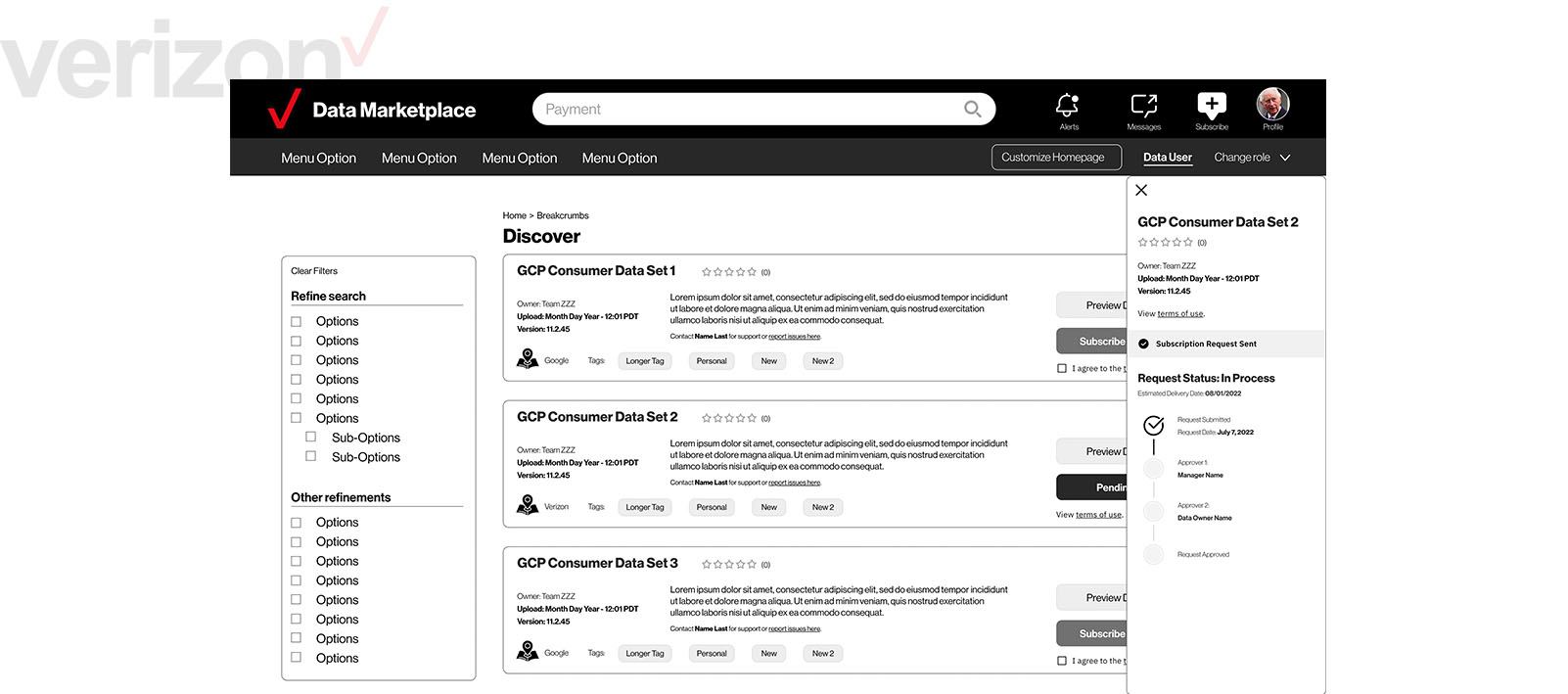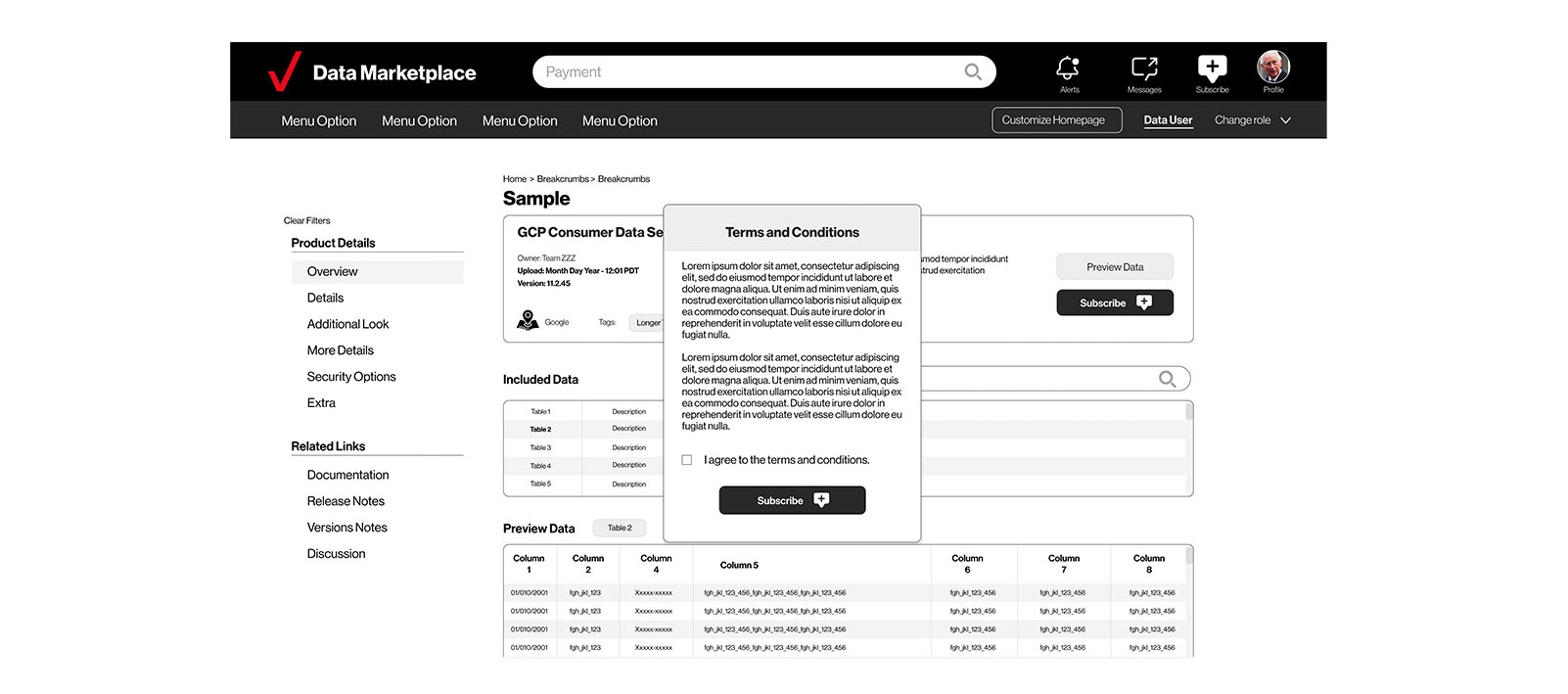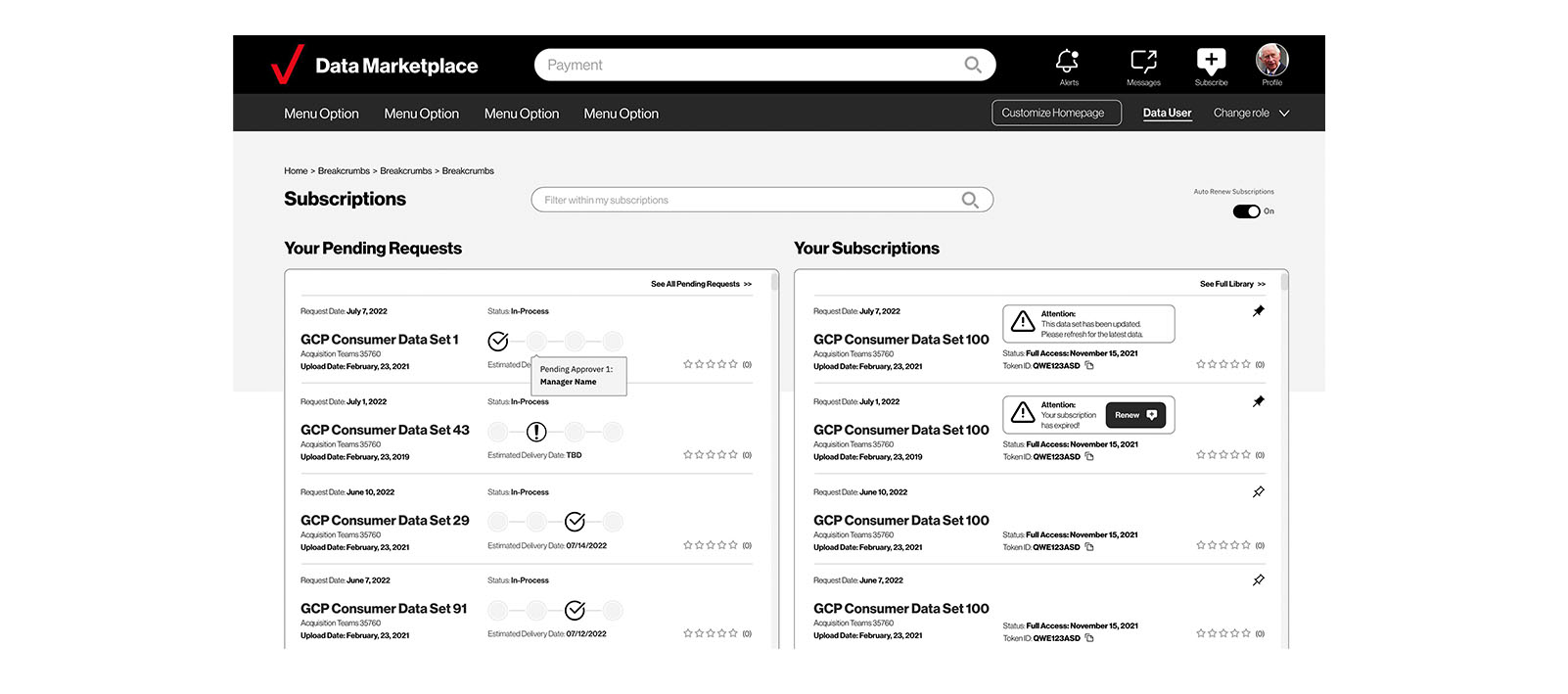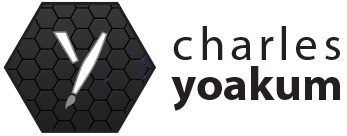Overview
Verizon wishes to build a global, internal, data marketplace. What would appear to be a simple request on the face of it has a veritable laundry list of problems to design around, including legacy data systems, a convoluted approval process and security protocols related to multiple levels of employee restrictions to access.
My role
Creative Direction
Design Lead
Visual Designer
Year
2022
Problems
Verizon’s ability to build the Data Marketplace was hampered by a large number of issues. Many, but not all, are listed here:
We initially identified 5 primary issues:
Full-time and Contract employees have many different levels of security access
Lack of consistency in searching scattered different databases for needed data
No rating on the quality of the data
Lack of visibility in the approval process
No limitations on time tied to time-sensitive projects

Lack of the Voice of Customer
We knew that Verizon had done some Voice of Customer research, but was unwilling to share the raw data with IBM, so we had to extrapolate our designs from what they were willing to share.
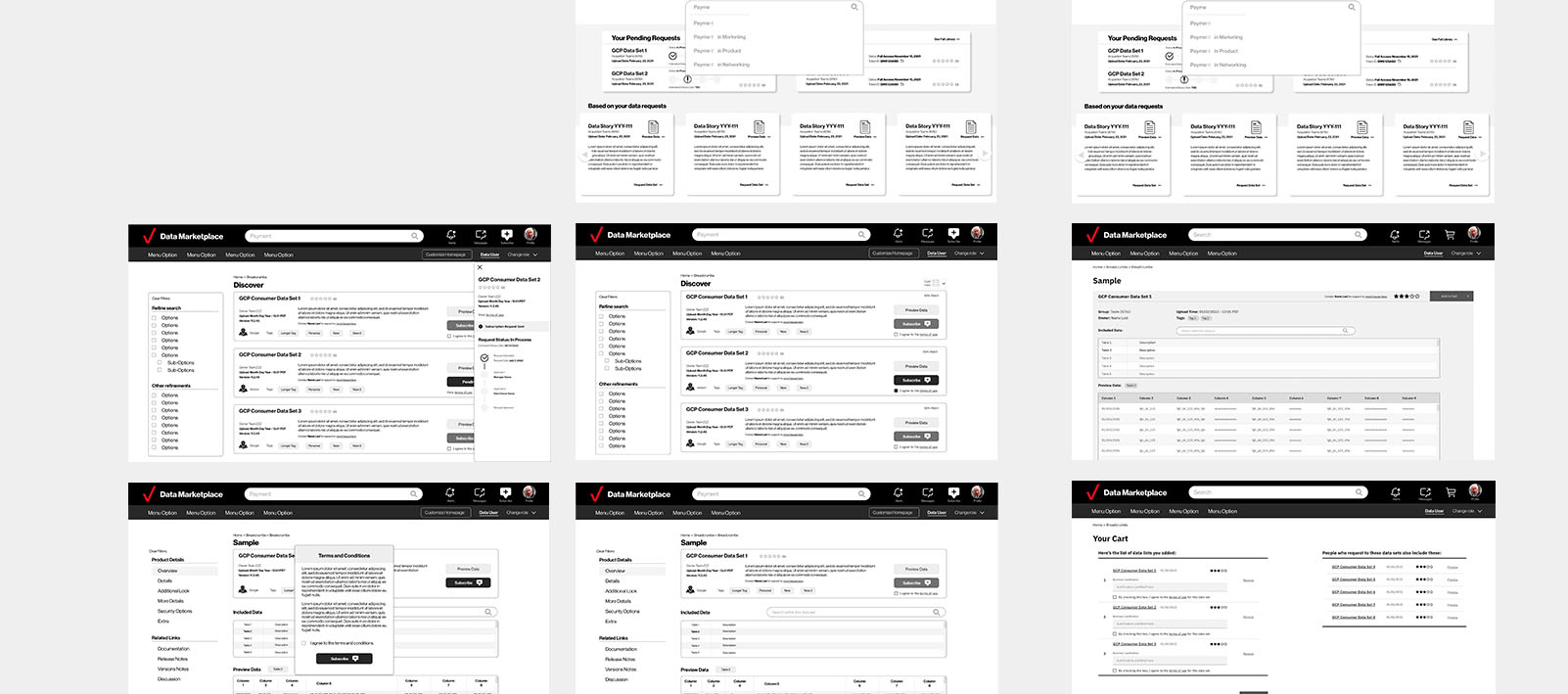
Under-sharing
This project was the perfect example of utilizing IBM’s hive mind: we were able to tease out only snatches of information from the client, and the initial presentation of wirerframes went poorly with the client. However, in rejecting the designs, the client revealed more information on why those designs didn’t work, and gave us much better direction, however obliquely that information was gathered.
Working as short-term design lead with a second IBM designer, I suggested a dual path of detailed wire-frames to be able to show the client that we had both listened to her feedback, and that we could, in fact, adapt to showing those different strategies, both at the same time.
Dual work
Working in tandem in the same file at a similar cadence allowed the other designer and myself to keep our list of “musts” and “wants” in constant view as well as making sure we avoided duplication in our wireframes.
Secondarily, we were working with far more detail that would usually be done with wireframes – these were mid-fidelity mock-ups because of the detail required to answer the abundant list of “needs” the client asked us to solve for. I had a long list of “asks” that the client needed to see or the deal was not going to move any further. I directed the deisgn work to make sure we checked off everything on the list, as well as some follow questions that I anticipated would come from this set of designs.
Deeper Insights
Anticipating follow-up questions is the province of having the experience to think through the presentation of the designs and making sure that you’re armed with the answers ahead of time. In this case, that would be understanding Verizon’s delays in their rather torturous internal approval process and designing modals or drawers to answer those needs before the client even voiced their concerns.
Final Designs
Addressing the front-end concerns and needs of the client, we provided two paths of “Search, discover, sample, & subscribe.”
A Laundry List of Details
Even in these comps, we were able to address details that were on the front burner, as well as think through the deeper needs of the potential data marketplace. A long (but not comprehensive) list that addressed in these black and white, mid-fidelity wireframes:
- Multi-level search
- Homepage customization of modules
- Alerts and messages addressing pending approvals
- Current data “subscriptions” and pending ones
- Frequent search history and AI-learning to suggest needed follow data subscriptions to speed up efforts
- Data rating, authorship of data sets, release and version statuses and sample data visibility
- Role-based access control

